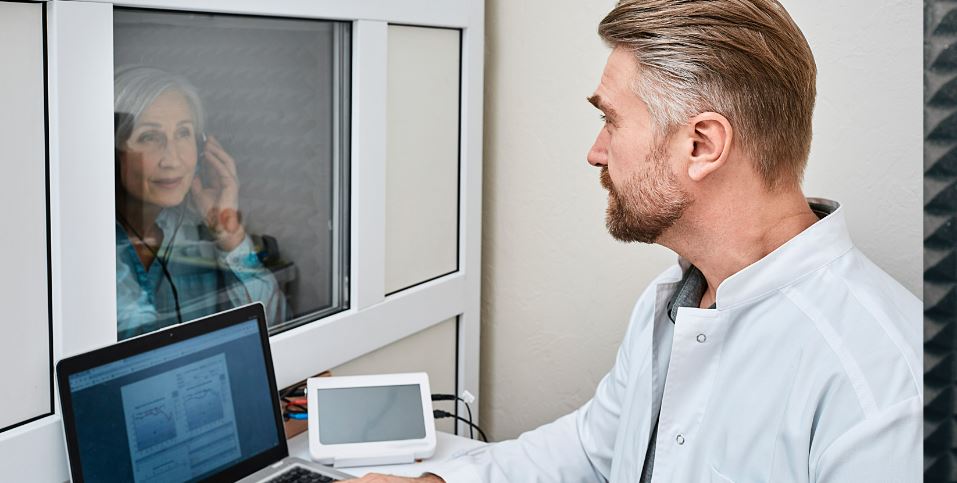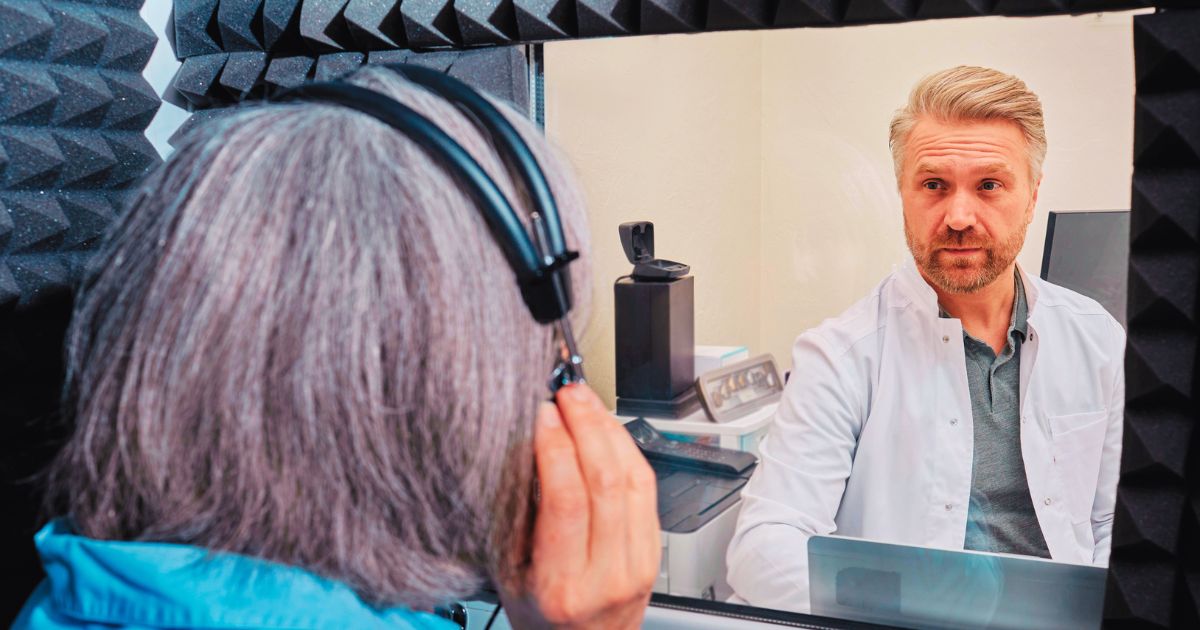Long promoted as a test used in the hearing aid selection and fitting process, the Quick Speech in Noise (QuickSIN) might be about to enjoy a rebirth!
However, since surveys of clinical best practices have suggest less than 30% of audiologists conduct any type of speech in noise testing, it might be more apt to call it a birth. In late August, preliminary guidelines for replacing word recognition in quiet testing with speech in noise assessments using the QuickSIN in the routine test battery was published-ahead-of print at Ear and Hearing. The authors make a compelling argument — backed up with rigorous statistical analysis — that word recognition tests ought to be replaced with speech in noise testing for all adult routine audiological assessments.
This is a big deal because, like amending the US Constitution and the Detroit Lions or Cleveland Browns winning the Super Bowl, there has been little meaningful change over the course of generations. In the case of routine hearing assessment, the basic word recognition in quiet testing protocol has remained unchanged for more than 50 years.
Speech in Noise Testing
Be it a birth or rebirth, this is important news for clinicians for several reasons. First, the number one complaint of most people with hearing loss is an inability to understand speech in the presence of noise, yet we test word recognition ability in quiet. Second, there is evidence suggesting that speech understanding ability cannot be predicted from word recognition in quiet scores, especially for individuals who score around 80% or better on words in quiet.

As clinicians who routinely use the QuickSIN know, it is common for some individuals with a good word recognition score of, say, 88%, to have excellent speech understanding ability in noise, while others with the same “good” score in quiet, score poorly on the QuickSIN.
Finally, because there has been a lack of guidance on exactly how speech in noise scores correspond to word recognition scores in quiet, clinicians — even those promoting the routine use of the QuickSIN — felt burdened by having to do two tests: the NU-6 in quiet to find PB-Max and the QuickSIN.
Fortunately, Matthew Fitzgerald and colleagues at Stanford University have made remarkable inroads in making speech in noise measures the default test of speech perception during the hearing assessment. They collected QuickSIN scores along with traditional pure tone thresholds and word recognition scores in quiet on a whopping 5,808 adult patients in their medical center.
After collecting this data, their statistical analysis indicated the QuickSIN when combined with the patient’s high-frequency pure tone average (HFPTA) accurately identifies individuals with good to excellent word recognition in quiet.
QuickSIN and Pure Tone Average
In the paper, they demonstrate that HFPTA and dB SNR loss as measured by the QuickSIN can predict patients who have good or excellent word recognition in quiet. Specifically, they show sensitivity, specificity and area under the curve (AUC) data for various combinations of SNR loss and HFPTA criteria at predicting word recognition in quiet scores with an 88% and 76% cut-off.
Their data can be used to create clinical recommendations on using the QuickSIN as the default test of speech perception as well as when word recognition in quiet testing should be completed. One clinical application of their analysis, for example, would be to only perform word recognition testing in quiet when the HFPTA is > 40 dB HL and the QuickSIN score is > to 7 dB SNR.
Patients with lower scores compared to the above criteria would have a better than 99% chance of a word recognition score between 88% and 100%. Thus, if a patient meets this HFPTA/QuickSIN criteria, there is no reason to take the time to complete word recognition in quiet testing. Patients who have scores worse than the above criteria would warrant further testing with words in quiet.
When using the QuickSIN, here are a few “must-do” considerations:
- During routine hearing assessments, using earphones, test each ear at a “Loud but Okay” intensity level (70-75 dB HL or higher). Like word recognition testing in quiet, this ensures that audibility is likely to be optimized.
- Only use the ten lists on the test that are equivalent: 1, 2, 3, 5, 6, 8, 9, 10, 11, and 12.
- It is best to gather separate ear information, therefore there are times when the non-test ear must be masked. Select appropriate masking (speech noise) for the non-test ear: 30 dB below presentation level is usually satisfactory unless bilateral conductive loss is present.
- In accordance with the preliminary guidelines cited above, the primary use of speech in noise testing is for diagnostic purposes. However, because the results of the QuickSIN are so relatable to most patients, it’s also an ideal way to discuss real world challenges associated with hearing loss and how much hearing aids can help improve performance in background noise.
- If you’re looking for more details on how to add the QuickSIN to your hearing aid selection, fitting and follow-up approach, check out Research Quick Takes Volume 6 that I co-wrote with Gus Mueller that is now posted at AudiologyOnline. You can even get a few CEUs by reading the article or watching the video.
- Ironically, some of the most important places to hear are filled with a lot of conversational background noise, like an event or lunch meeting, which are also some of the most difficult to hear in. Luckily, the QuickSIN does a remarkable job of simulating some of the dynamics of an actual conversation because the background noise used in the test is other people talking. The general test results are typically easy for patients to understand and will serve as a good way to identify that they are struggling to hear in those noisy situations.
For those who want a more thorough understanding of speech in noise testing and a review of the research that undergirds it, this recent article is well worth your time.
20Q: Speech in Noise Testing – Too Useful to be Ignored!
About the Author

Brian Taylor, AuD, is the senior director of audiology for Signia. He is also the editor of Audiology Practices, a quarterly journal of the Academy of Doctors of Audiology, editor-at-large for Hearing Health and Technology Matters and adjunct instructor at the University of Wisconsin.







